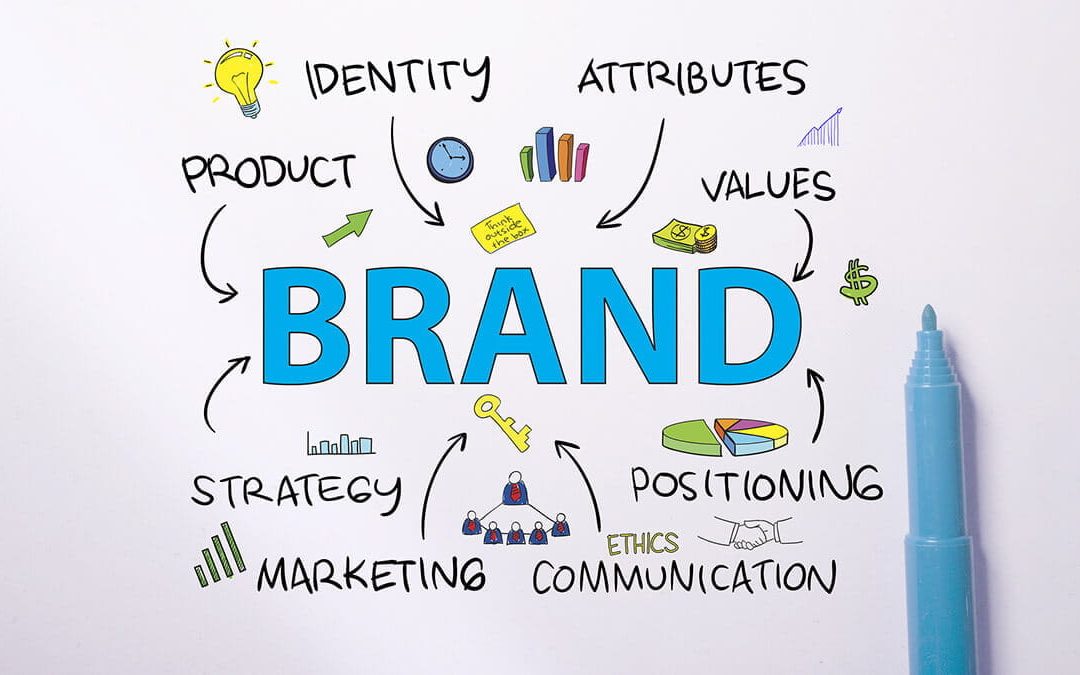When do you think of brands, which ones come to mind? Coca-Cola, Starbucks, McDonald’s, Walmart, Apple, and Nike. Millions of brands populate our world, but the true test of their longevity and resilience is brand management. Without brand management, none of these brands could have achieved the lasting success they have.
What is brand management? In marketing jargon, brand management is an “umbrella term that describes all the facets of design, placement, marketing, advertising, and distribution that foster identifying and developing a brand personality.”1 Brand management encompasses more than just the aesthetics of a brand. It involves the management of an organization’s brand identity, or “all elements that a company creates to portray the right image to its consumer.”2 This includes packaging, press releases, public relations, customer service, event management, retail experience, how executive leadership styles are expressed in the news, or any “touchpoints” with customers throughout a brand experience.
No matter your brand’s industry, age, or size, brand management is instrumental in continued success. Here are five reasons why:
-
To manage a brand, you must have a brand to maintain.
Brand management involves two main stages: establishing a brand and maintaining it. While the bulk of brand management is dedicated to the maintenance portion, without a strong brand, there’s no brand to sustain.
How does one establish a brand? An organization must stand out from its competition in the marketplace. To do so, the company determines and sells its unique selling proposition, or what differentiates the brand’s product or service in its category. The unique selling proposition, or USP, should be defined internally and communicated externally in branding messaging.3
-
People must know your brand in order to buy your products or services.
Brand awareness is a key component of brand management. If customers don’t know who you are or think of your brand when it’s time to make a purchasing decision, they will purchase a competitor’s product or service.
For potential customers to know your brand, it is critical to promote it through your marketing and advertising efforts. All marketing messages should encourage brand awareness while embracing your USP.3
-
To gain and keep customers, you need to know where they are and what they want.
While customers must know your brand in order to buy it, your brand also needs to know its customers to reach them. In effective brand management, brand managers know their target market and its spending and consumption habits, and tailor the placement of marketing and advertising accordingly. Your marketing activities should meet your potential customers where they are spending their money or time.
In addition to smartly placed marketing communications, your brand should also work toward building stronger customer loyalty, which rewards your brand with recurring purchases. Keeping customers aware of your brand with consistent advertising and marketing messaging helps. However, one of the most underutilized considerations in building brand loyalty is customer service. When executed well, customer service enables a brand to stand out from competitors, excites current and future customers, and bolsters brand identity.4
Great customer service empowers customers and invites the possibility of them becoming brand advocates. Customers also give feedback during customer service interactions, which can be used throughout brand management and companywide to inform future business decisions for a brand.
-
Consistency throughout a brand is critical.
Brands should convey a consistent tone and feel in every brand touchpoint. Brand managers work to ensure that both aesthetic and intangible aspects of a brand align. This includes packaging, product or service quality, marketing campaigns, and the customers’ emotional experience of interacting with your brand.5
A well-managed brand externally expresses itself in a voice that reflects the company’s culture and values. This voice is reflected across its media presence, including its website, blogs, social media, and events. To execute consistent messaging and logo and design attributes, brand management often creates brand style guidelines. Brand guidelines typically manage the use of a brand’s logo, fonts, and official colors. These guidelines may also include editorial instructions, such as how to use taglines or specific wording, facts, and figures in communications.6
Large companies, especially ones with affiliates, must take extra care to ensure consistency throughout a brand. The more complex the company, the more likely the chance of an affiliate or vendor using out-of-date or inaccurate messaging or brand identity work.5 Effective brand management examines the entirety of a brand meticulously to ensure a brand is communicating itself clearly and reliably across channels and platforms.
-
Maintenance never ends in brand management.
Once your brand has been created, the work to maintain it never ceases. Logos, taglines, and editorial messaging should adhere to brand guidelines. Facebook, Twitter, and Instagram updates should convey a similar brand tone and feel as brochures and mailers. All interactions with your brand should positively reinforce your brand identity.
Without adequate attention and nurturing, a brand’s image erodes. It’s the responsibility of brand management to continuously refine and improve it.
Article Provided By: Walden University
 If you would like to discuss Your Website’s Search Engine Optimization with Mojoe.net or your website’s analytics, custom logo designs, graphic design, social media, website, web application, need custom programming, or IT consultant, please do not hesitate to call us at 864-859-9848 or you can email us at dwerne@mojoe.net.
If you would like to discuss Your Website’s Search Engine Optimization with Mojoe.net or your website’s analytics, custom logo designs, graphic design, social media, website, web application, need custom programming, or IT consultant, please do not hesitate to call us at 864-859-9848 or you can email us at dwerne@mojoe.net.

Recent Comments